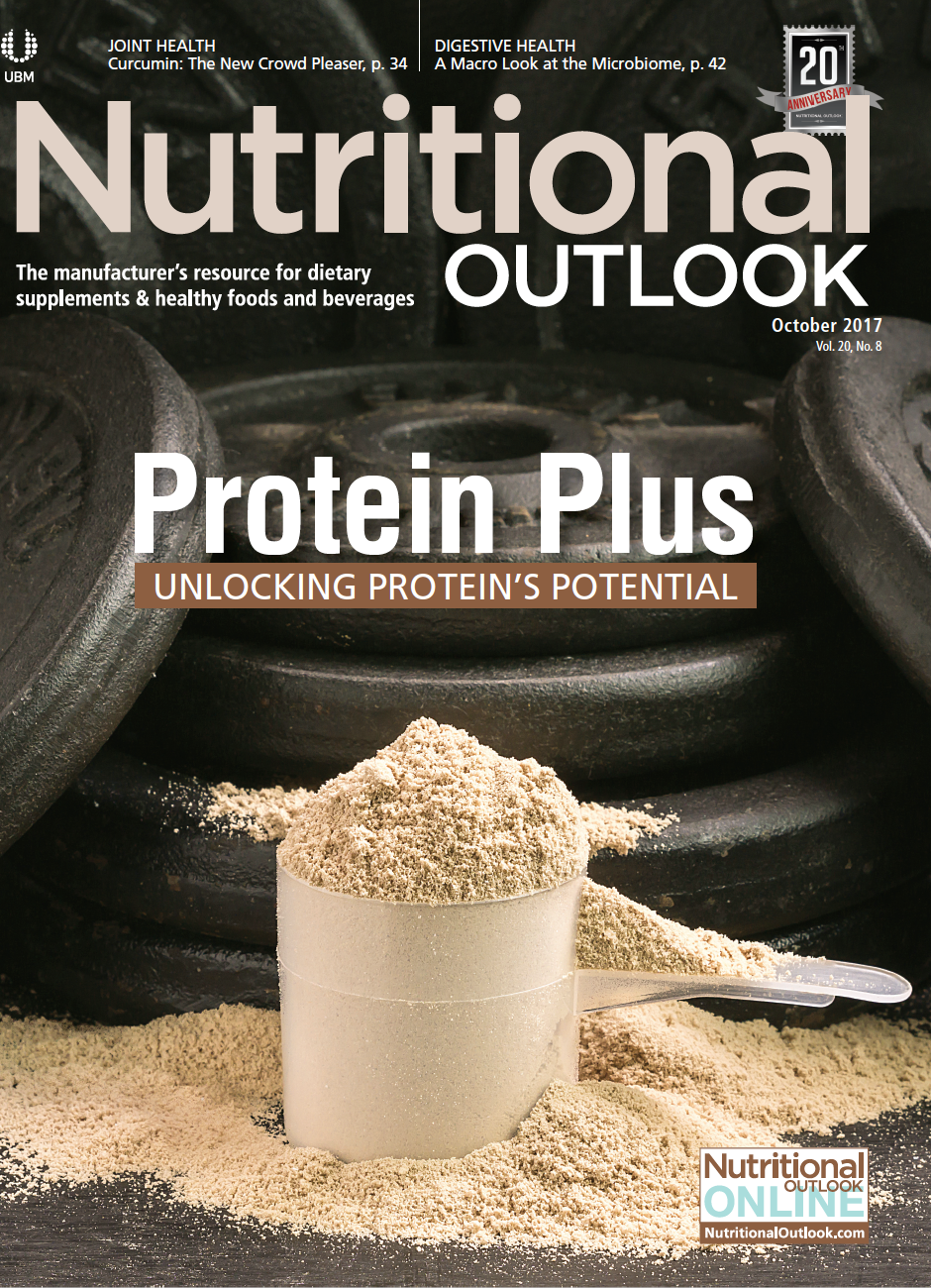A Macro Look at the Microbiome
Scientists are just beginning to scratch the surface of this expansive arena. And while the opportunities seem endless, many challenges still need resolution.
Photo © Shutterstock.com/vrx

If there’s one topic piquing the attention of scientists, nutraceutical formulators, and big pharma alike, it’s the study of the human microbiome. Here lies an area that holds so much promise, from immune- and digestive-health implications to those impacting cognitive health, longevity, and more. But, like all areas of science in the infancy stage, its opportunities are matched only by its challenges.
Research Hurdles
First, researchers face the inherent challenge of the microbiome’s complexity, including its vast community of microbiota. According to one recent study1, the body actually contains a 1:1 ratio of bacterial to human cells, rather than the widely cited 10:1 ratio; still, researchers also estimated that gut flora occupies a total mass of about 0.2 kg in the body, including as many as 1,000 different species. “Although some technological advancements in metagenomics methods such as high-throughput sequencing is helping make quicker work,” says Alan Rillorta, director of marketing at AIDP Inc. (City of Industry, CA), “as one can imagine, mapping and documenting the benefits of such a large number of microbiota can still take a lot of time.”
But, as Mervyn de Souza, vice president, health and wellness, new product development, innovation and commercial development, at Tate & Lyle (Hoffman Estates, IL) points out, mapping the microbiome is just the beginning of the challenges facing researchers. Beyond mapping, he says, scientists will need to understand how the microbes interact with each other and with the body, and the consequences of these interactions. “That’s compounded by the fact that we have geographical diversity, lifestyle choices, and disease states,” he adds. “When you factor in all the inherent complexities and try to start to strip away what confounds this field, I think a challenge where we will need to have increasing clarity and alignment is in how we study the microbiome.”
Indeed, the methods by which the microbiome is studied represent a challenge noted by John Deaton, vice president of science and technology at Deerland Enzymes & Probiotics (Kennesaw, GA). “It’s important to understand the limits of the techniques we currently use to analyze the microbiome,” he says, “and how to improve and perfect those techniques.”
Right now, for example, de Souza points out that sampling largely consists of fecal analysis, which is a static data point and not always reflective of the highly dynamic reactions happening within the intestines and colon, and even within specific regions of the colon. Ultimately, the limits of sampling can blur the lines between correlation and causation, he says.
“Because this area of study is new and exciting, there are many people rushing to conclusions based on what are essentially preliminary discoveries,” agrees Deaton.
One way that Tate & Lyle is addressing this issue is by making use of a technology called SHIME (Simulator of the Human Intestinal Microbial Ecosystem), which enables researchers to conduct in vitro studies on simulations of the human gut. But this is really just the beginning, as human testing is truly the next frontier.
While Ralf Jäger, scientific advisor at Pharmachem Laboratories (Kearny, NJ), is the first to admit that extensive efforts to characterize the human microbiome, coupled with advances in sequencing technologies, have tremendously increased scientists’ knowledge in this area, it’s a challenge to really take these findings to the next level: “Current challenges include translating all these new findings into safe, clinically validated products with clinically relevant benefits for a healthy population. While the number of well-designed human intervention studies has significantly increased, this seems to currently be the bottleneck to further drive this field.”
Endless Opportunities
Despite the challenges facing this new area of research, the opportunities abound, especially for nutraceutical suppliers and manufacturers.
What’s most exciting about the microbiome is that its composition-healthy or otherwise-seems to have far-reaching effects for the entire body. “In fact, it is starting to become apparent that many diseases or disorders are characterized by a change in microbiome composition, a so-called dysbiosis or dysbiotic state,” says Andrew Morgan, fellow and nutrition and health chief scientist at DuPont Nutrition and Health (Wilmington, DE). Since dysbiosis is often induced by the depletion of a certain microbial species, opportunities exist for nutraceutical brands and manufacturers to tap into these species as next-generation probiotics.
At DuPont, the microbiome modulator of interest is currently human milk oligosaccharides (HMOs), complex glycan structures present in human milk and one of the most important modulators when it comes to infant microbiome formation. According to Morgan, they essentially act as prebiotics in that they support the growth of some microbes, but they also prevent the attachment of pathogenic microbes. In response, DuPont is working on bringing to market its first HMO ingredient (2’-fucosyllactose).
If you ask Jäger, commensal bacteria-bacteria that neither benefits nor provokes any harm to the human body-represent a distinct area of commercial opportunity for nutraceuticals. “For example, Akkermansia muciniphila is commonly found in the human gut, generally at an abundance of 1%-7% of the total bacterial population,” he says. This bacteria, he explains, has been inversely linked with obesity, diabetes, inflammation, and metabolic disorders, and people who are physically active typically have higher amounts than those with sedentary lifestyles. “While the nutritional industry is currently not able to use Akkermansia as a dietary supplement, we can use other nutritional strategies, including probiotic strains, to increase the Akkermansia population,” Jäger says.
This type of approach opens doors to a new role for nutraceuticals: one in which formulators may be able to pinpoint the impacts of a western lifestyle, from diet and hygiene to antibiotics use, and address them directly with probiotics. “We seem to lose microbes that are key for good functioning of our immune system and other physiological functions in our body,” says Johan van Hylckama Vlieg, vice president of microbiome and human health innovation at Chr. Hansen (Denmark). “Bringing back some of these bacteria can truly impact health, and the probiotic concept is more relevant than ever before.” Addressing specific diet and lifestyle habits can even enable nutraceuticals formulators to solve challenges related to how specific foods and behaviors may influence the personal microbiome.
Essentially, since each person’s microbiome is unique-based on a variety of factors from geographical location to lifestyle choices-the ultimate goal will be to profile the microbial population of a healthy individual and compare it to that of someone with a specific health condition, says Deaton. “Probiotics, prebiotics, and other ingredients that influence the gut microbiota will be key players in formulations for a wide variety of health conditions,” he says.
What’s Next
In order to reach its full potential, the study of the microbiome has some ways to go.
Rillorta expects that the future holds potential for probiotics and prebiotics to be marketed towards specific health conditions; however, the specific roles that unique gut probiotic strains play on human health are not yet understood.
“The human gut microbiota comprises approximately 100 trillion microbial cells. An imbalance of the microbiota has a negative effect on many aspects of human physiology, and improving the balance by dietary intervention may be the key to improving overall health,” agrees Jäger. That said, further research is needed to, first, identify the strains that yield specific health benefits, and second, understand how those strains impact the other microbiota at play. “The short-term goal is to have better individual players, better anti-inflammatory strains, better strains to improve immune health, or strains that improve mood or help with food allergies,” he says. “The long-term goal is to have the best team on the field we can find, and [determine] how to put that team together.”
Indeed, Deaton thinks that better genome sequencing techniques are on the horizon, as they become less and less cost prohibitive, which will allow researchers to identify microbiome inhabitants with strain specificity. “I believe that the not-too-distant future holds discoveries on exactly how the microbiome affects many aspects of health such as mood, physique, immunity, and cognition,” he says. “It’s exciting to know that in the coming years, we will begin to see the trees, not just the forest.”
Sidebar: The Microbiome and Antiaging
A new study, published in 2017 in Cell2, found that certain bacterial genes and compounds can slow the progression of tumors and the accumulation of amyloid-beta, a compound associated with Alzheimer’s disease. The study’s researchers posit that, eventually, slowing down the aging process entirely may be possible with supplements derived from gut bacteria.
Researchers turned to the laboratory worm Caenorhabditis elegans, since it shares essential characteristics with human biology: throughout the course of its two-to-three-week lifespan, this worm feeds, develops into an adult, reproduces, and then ages, losing strength and health until death. In order to study the effects of individual bacterial genes on the lifespan of the worm, researchers employed a complete gene-deletion library of E. coli, with each sample lacking one of close to 4,000 genes. Then, they fed the worms each individual mutant bacteria and looked at its impact on the lifespan. Of the nearly 4,000 bacterial genes tested, 29, when deleted, increased lifespan. Twelve of the mutants protected the worms from tumor growth and amyloid-beta accumulation.
“Altering bacterial genetic composition in the microbiota might be an effective nutraceutical strategy to activate longevity signaling in the host, and this research provides a blueprint for searching for these genetic variants in bacterial species of the human microbiota and for genetically engineering pro-longevity probiotics,” says corresponding author Meng Wang, associate professor of molecular and human genetics and associate professor in the Huffington Center on Aging at the Baylor College of Medicine. “This research demonstrates the possibility that natural compounds purified from pro-longevity bacterial variants can directly exert beneficial effects.”
Also read:
Microbiome Study Challenges: A Microbiologist Discusses Opportunities, Hurdles at IFT 2017
Microbiome and Emerging Research to Unlock Probiotic Mysteries?
Soy Protein Fosters More Diverse Gut Microbiome than Whey Protein, Animal Study Suggests
References:
- Sender R et al., “Revised estimates for the number of human and bacteria cells in the body,” PLoS Biology. Published online August 19, 2016.
- Han B et al., “Microbial genetic composition tunes host longevity,” Cell, vol. 169, no. 7 (June 15, 2017): 1249-1262

Prinova acquires Aplinova to further increase its footprint in Latin America
April 7th 2025Prinova has recently announced the acquisition of Brazilian ingredients distributor Aplinova, which is a provider of specialty ingredients for a range of market segments that include food, beverage, supplements, and personal care.

























